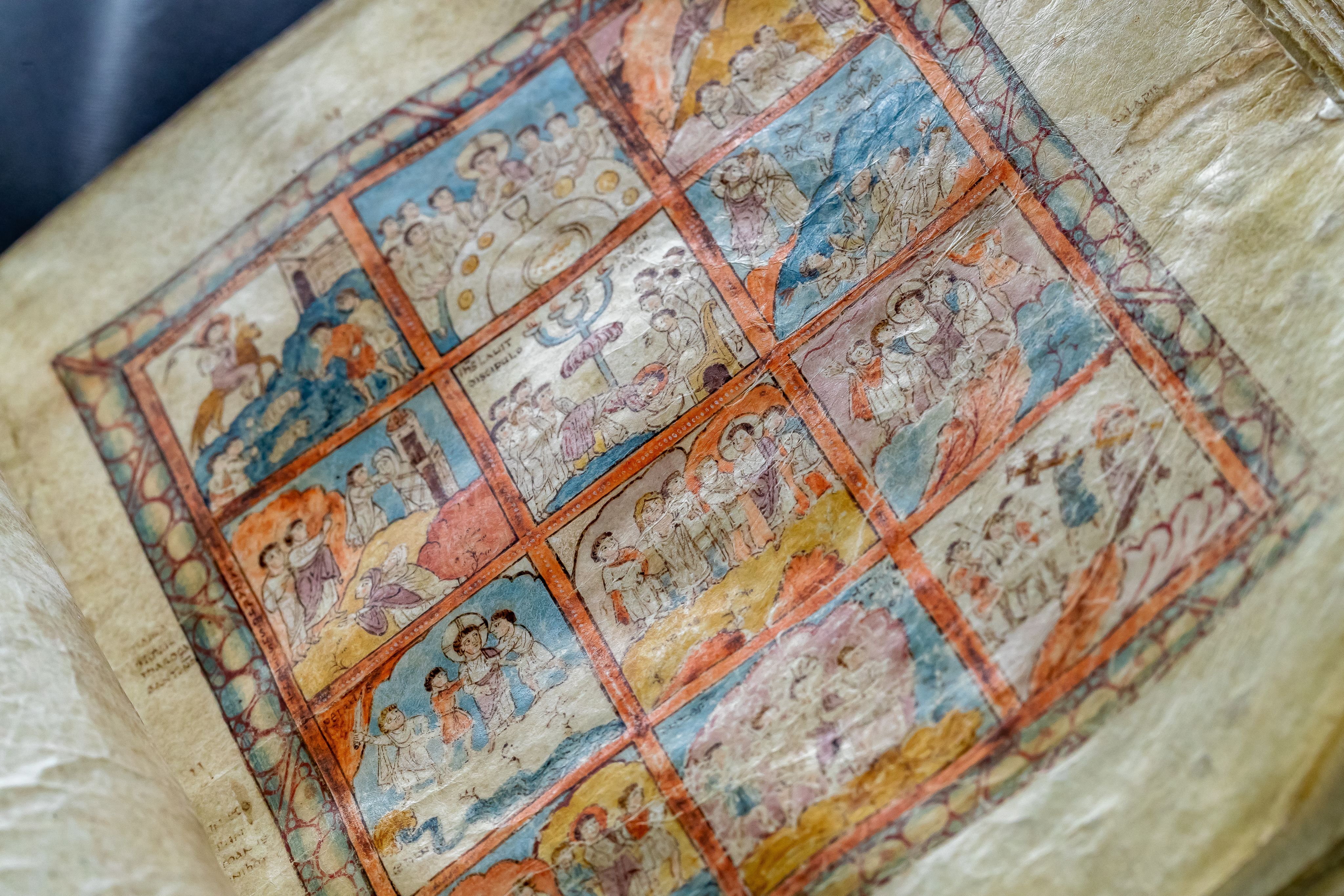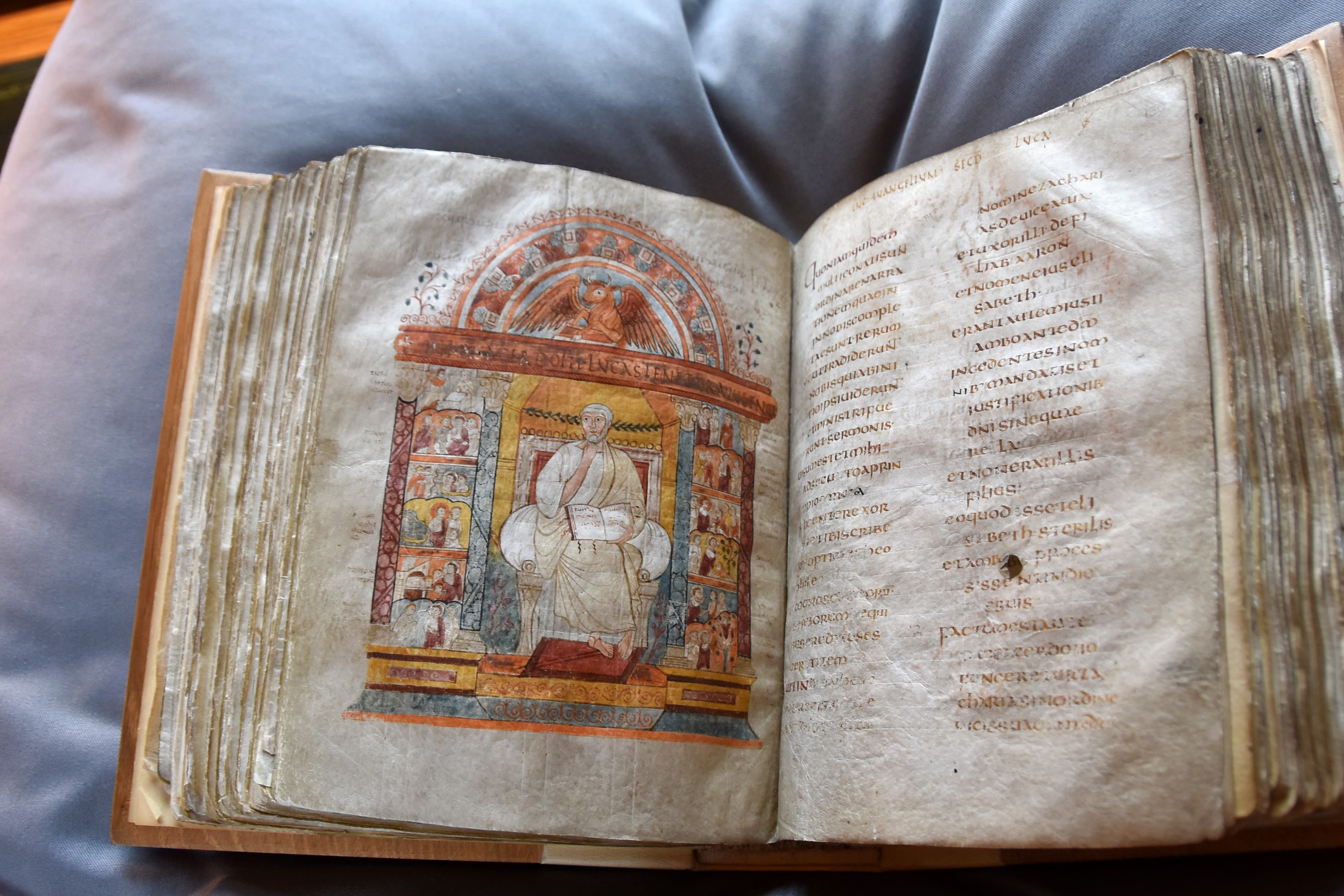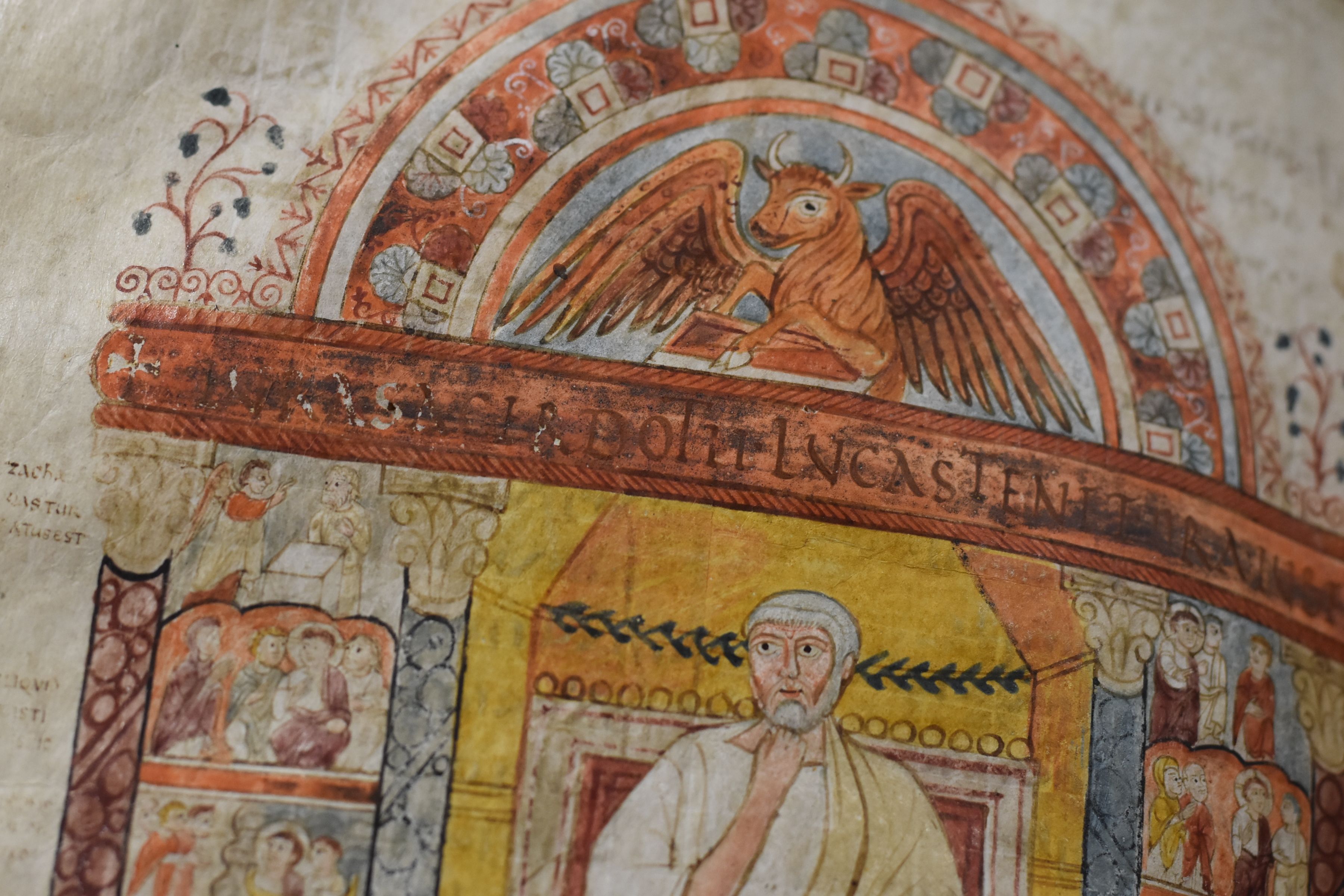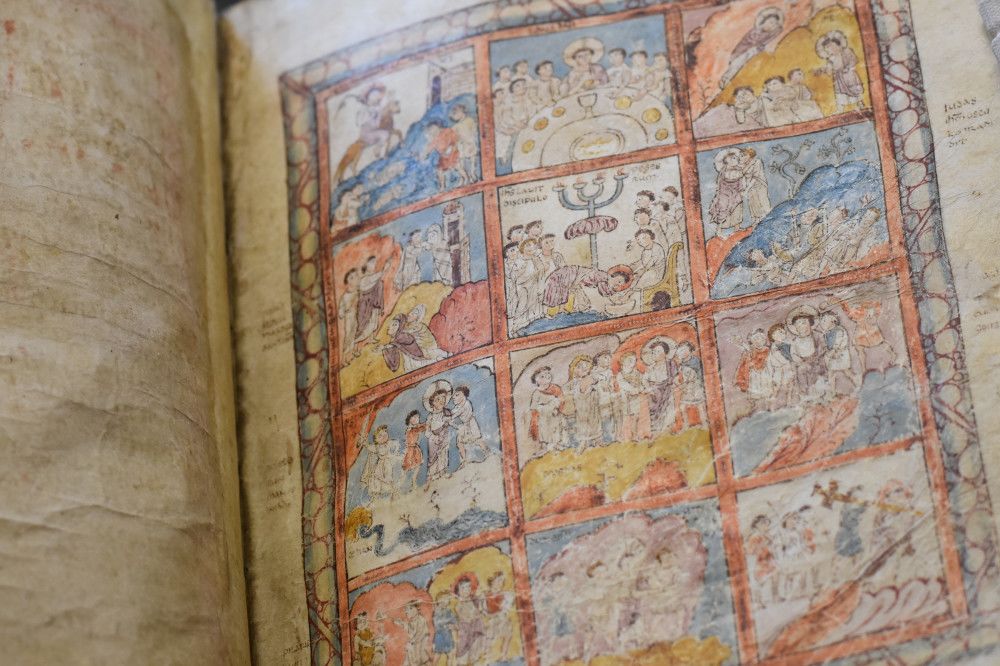Pictured in a Book
The images in the sixth-century Augustine Gospels have much to tell us about the provenance and purpose of the manuscript.

In the Augustine Gospels only two illustrated pages remain, but they reveal a world of detail about the origin of the manuscript and how it was employed.
This version of the Gospels is unique not only for the influence it has exerted over British governance and administration for the last fourteen centuries, but also for its material qualities. It is the oldest illustrated Latin edition of the Gospels in the world and the earliest surviving book with a continuous history in medieval England. Its fundamental significance to the nation was recognised when the Gospels were inscribed in 2023 on the UNESCO UK Memory of the World Register.
We know that the manuscript was written and illustrated in Italy, most likely by monks commissioned by Pope Gregory the Great.
Unlike more lavishly illuminated Gospels, it appears to have been primarily intended as a teaching aide, as evidenced by the size of the book itself (quite portable), the generous height of the text (readable whilst being held) and the presence of the illustrations, of which only two remain. These are the frontispiece for the Gospel of Luke and a further page of twelve framed vignettes depicting, roughly, the Passion of Christ.
These illustrations have been studied by Professor George van Kooten, Lady Margaret's Professor of Divinity at the Faculty of Divinity at the University of Cambridge. He notes that “The vignettes resemble Powerpoint or even a concise graphic novel. It’s very easy to follow Christ through the succession of scenes from the Gospels, from his arrival at Jerusalem to the carrying of the cross to the crucifixion.”
“What is also striking is that Christ is clearly depicted in a purple toga, a garment worn by Roman civilian magistrates and dignitaries. This shows how Christ was being presented in these Gospels to the native British population as a figure of peace two centuries after the Roman army had withdrawn from Britain.”

At one time each of the four Gospels would have had a frontispiece depicting its author, but the sole remaining portrait is of Luke.
At one time each of the four Gospels would have had a frontispiece depicting its author, but the sole remaining portrait is of Luke.

Luke is shown between scenes from the narrative of the Gospel and beneath the symbol of a winged ox.
Luke is shown between scenes from the narrative of the Gospel and beneath the symbol of a winged ox.

Folio 125r contains twelve scenes laid out in four rows of three. Each depicts a scene from the Passion of Christ.
Folio 125r contains twelve scenes laid out in four rows of three. Each depicts a scene from the Passion of Christ.

Jesus is depicted in each scene wearing a purple toga, a Roman symbol of nobility or status.
Jesus is depicted in each scene wearing a purple toga, a Roman symbol of nobility or status.
